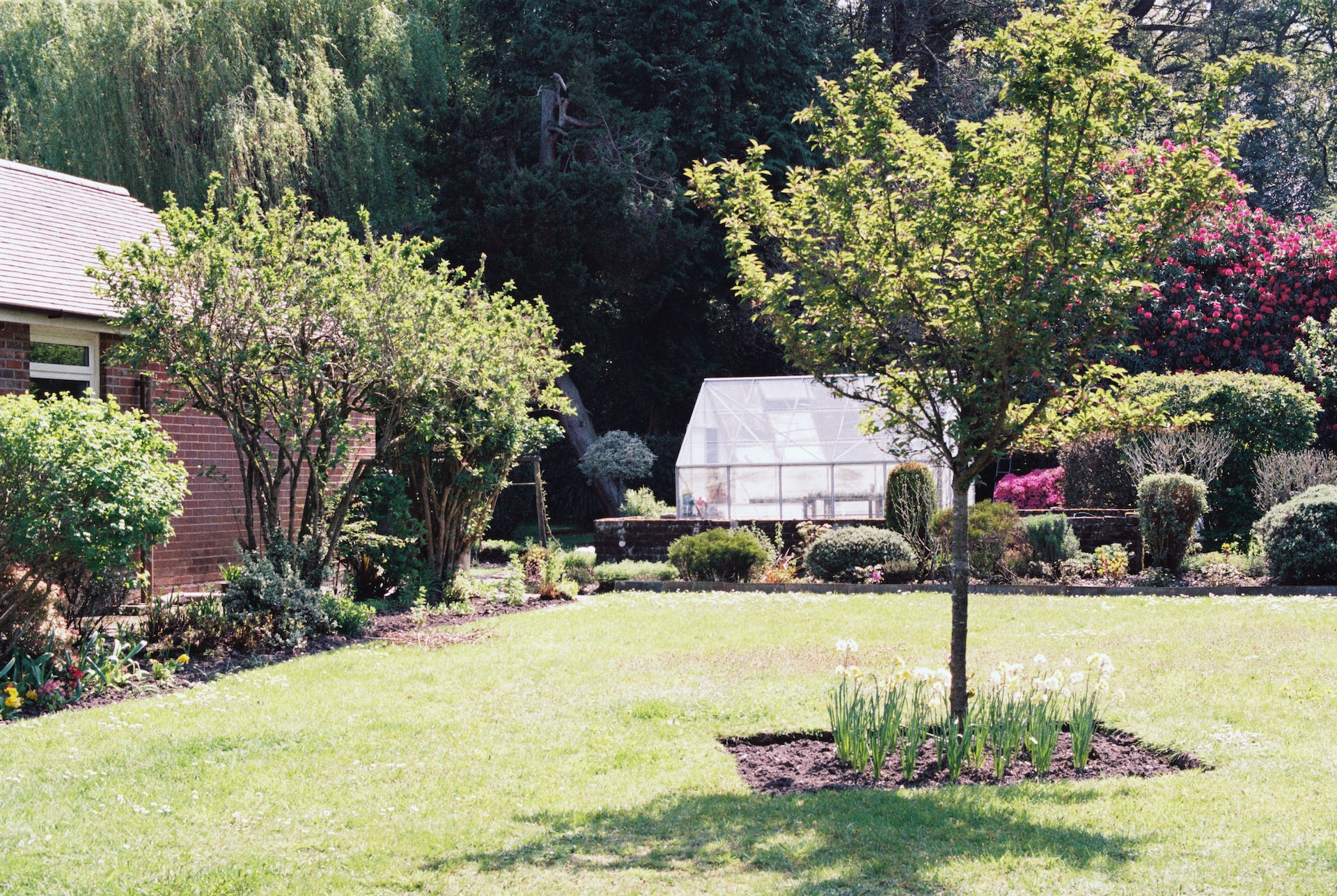If you are looking to create your own garden oasis or simply need tips on how to spruce up your outdoor space, you’ve come to the right place. We understand that the process of garden landscaping can seem daunting, especially when dealing with different budgets and spaces. However, fear not!
In this guide, we’ll provide you with all the necessary tools and inspiration to transform your garden into a beautiful and functional space.
Whether you want to create a cosy nook for some quiet reading or entertain guests in a stunning outdoor setting, you’ll learn how to create a space that reflects your unique personality and needs.
What are the main principles behind garden landscaping?
Garden landscaping can be a complex process, but following some basic landscape gardening principles will help you create an outdoor space that is both attractive and practical that meets your needs and reflects your style.
Here are some of the main principles behind garden landscaping:
- Identify your landscape needs and wants.
- Consider location, including sun and wind patterns.
- Spend time in your landscape to determine how you want to use the space.
- Start small to avoid getting overwhelmed.
- Focus on finding a focal point or series of focal points.
- Think about scale and pacing to create a cohesive design.
- Be open to changes as you experiment with your design.
How do you design a garden layout?
Designing a garden layout involves careful consideration of various factors, such as:
- Privacy
- Lighting
- Sun and wind patterns
- Soil type
Think about the location of your outdoor space, and study the sun and wind patterns that will affect different areas of your garden. It’s also a good idea to do a soil test before planting to make sure anything you plant will thrive in the long term.
Follow these tips when designing your garden layout:
1. Define your needs and wants
The first step in designing a garden layout is determining your and your landscape’s needs and wants.
- Consider what activities you would like to do in your garden and what elements are most important to you, such as a play area for children, a patio for outdoor dining, or an area for growing vegetables.
- Make a list of these needs and wants and create rough sketches of the garden to get an idea of where to place things. This doesn’t have to be a professional-grade design, as it’s a simple organising principle to get started.
- By sketching different ideas, you can easily play around with various layouts without making a significant time and financial commitment.
2. Combine natural landscaping and hardscaping
Combining natural and hardscaping components in your garden landscaping ideas will create contrast and interest.
- Natural landscaping refers to planting trees, shrubs and grasses.
- While hardscaping refers to non-organic materials, such as wood, gravel, stone and brick.
The best gardens balance both elements of landscaping.
3. Consider where you may need shade or privacy
Which way does your garden face? If you have a south-facing garden, you will get a lot of direct sunlight during warmer months with limited shade. So, consider ways to create pockets of shade.
Similarly, depending on where you live, privacy may be a consideration. Do you want to create a secluded nook within your garden? Do you want to create more privacy between your garden and your neighbour’s?
Top tip: Installing a pergola for shade and privacy is an excellent idea in sunny or partially sunny gardens as it provides shelter and creates a secluded atmosphere.
4. Consider the focal points of your garden
To create a delightful landscaped garden, it’s important to consider creating different zones and using different heights to create interest and balance.
For example, tall and upright plants will highlight your garden’s verticality, which is particularly effective if you have a small garden.
Consider recreational areas, such as planting herbs or vegetables and creating a resort-like garden with various amenities like sun loungers or a pizza oven. Keeping nature at the forefront of your design reduces the chances of your garden feeling artificial and makes the space more relaxing and enjoyable.
5. Plan your garden lighting
Planning garden lighting is integral to garden landscaping as it can create a beautiful atmosphere and provide functional light. With proper planning, you can highlight specific areas of your garden, add safety features and even extend the use of your garden area well into the night.
- Plan lighting ideas early on in the landscaping process.
- Sketch your garden area to scale.
- Determine which areas need the most lighting and what lighting is best.
- Use lighting for outdoor dining areas and showcase areas you’d like to see from indoors.
- Figure out the light direction for each light point.
- Alternate between bright and softer lights to create a beautiful effect.
6. Decide on the ideal layout for your garden
Planning a garden layout allows you to create a customised design that meets your needs and showcases the beauty of your outdoor space. Measuring the area first and drawing a scale plan can help you mark out functional areas of the garden, taking into account how sunny or shady these areas are and what will go on in the space.
Here are four tips when planning a garden layout:
- Spend time in your landscape, and make careful observations to see what configurations work best.
- Think about privacy and clever ways to create shade using planting or pergola ideas.
- Consider adding garden buildings or a greenhouse to the plan first before marking out hardscape and softscape areas.
- Remember to think about the overall look and feel of the space to ensure cohesion and harmony.
7. Plan where you will plant borders and flower beds
Planning garden beds and borders can add colour, structure, and texture to your outdoor space. Deciding on the number, size, position, and shape of garden beds and borders should be led by the style of garden you want to create and the amount of time you have for garden maintenance.
When planning a garden bed or border, consider the type of soil, climate, and sunlight in the area.
Here are three tips when planning garden beds and borders:
- Consider the style of the garden you want to create, whether a formal garden or informal look, or a traditional or contemporary garden, and let that inform the number, size, position, and shape of garden beds and borders.
- Plan what to plant in each bed and border based on soil type, climate, and sunlight exposure. Think about planting trees, evergreens, deciduous flowering shrubs, and flowers, and count on putting in an odd-numbered group for a natural look.
- Remember to plan the border planting from back to front and work from the centre to the perimeter for a bed.
Does landscaping add value to a house?
Landscaping undoubtedly adds value to a house. A home’s exterior is the first thing a potential buyer sees, and first impressions matter. A well-designed landscape can create an attractive and inviting entry for the house. This alone increases a house’s appeal and raises the property’s value.
A green lawn, mature trees, and shrubs that add privacy not only elevate the home’s appearance but also improve its functionality.
Additionally, adding hardscaping features such as a patio, outdoor living space, or garden can offer additional areas for entertainment and leisure, adding more value to the property. Therefore, investing in a well-maintained and well-designed landscape can provide homeowners a substantial return on investment.
Budget-friendly garden landscaping ideas
Garden landscaping can be done without breaking the bank. There are plenty of budget-friendly options that can create a beautiful garden space.
Installing a simple garden bed, incorporating native plants, or adding recycled materials to create garden structures can create visual interest without spending too much.
Well-composed soil and compost can also help encourage healthy plant growth without investing too much money in new plants.
Incorporating low-cost materials such as gravel or mulch to make paths or borders can also help to create a polished garden look. With some creativity and thoughtfulness, individuals can design an attractive garden space without spending a lot of money.
Here are some ideas for low-cost garden landscaping:
- Create a theme for your garden, such as a butterfly or vegetable garden, to help guide your plant choices and save money on unnecessary plants.
- Shop at local nurseries or garden centres for sales and discounts, or look for community plant swaps to trade plants with other gardeners.
- Create shade without spending money on a structure by planting trees or tall shrubs that can provide natural shade and privacy.
- Use inexpensive materials like bricks, recycled concrete or fallen logs to create garden pathways or borders.
- Look for free local resources such as mulch, compost or soil from recycling centres, or collect rainwater with a rain barrel to water plants instead of using municipal water.
- Incorporate attractive, low-cost garden structures such as a DIY arch made from PVC pipes or a pergola made from recycled materials to create focal points.
- Consider investing in perennials that return year after year rather than annuals that need to be replaced annually.
When is the best time to landscape a garden in the UK?
The ideal period for starting a landscaping project in the UK is during April and May. This timeframe offers optimal conditions for plant growth, allowing newly planted trees and shrubs to thrive as spring unfolds.
How long does it take to landscape a garden?
The duration of a garden landscaping project will vary massively, depending on the size of your garden, the work you have planned and whether you will be hiring professional help.
If you are working with a professional landscape gardening company, it can take from two weeks up to three months to finish your project.
We Offer Professional Landscaping Services in North London
With the tips and ideas in this guide, you’ll be able to create a one-of-a-kind outdoor space that is as functional as it is beautiful. From incorporating budget-friendly materials to utilising native plants, there are many ways to achieve a stunning garden design that suits your needs and style. If you need help landscaping your garden, get in touch with our friendly team. We have all of the tools and supplies needed to create your dream garden space.


